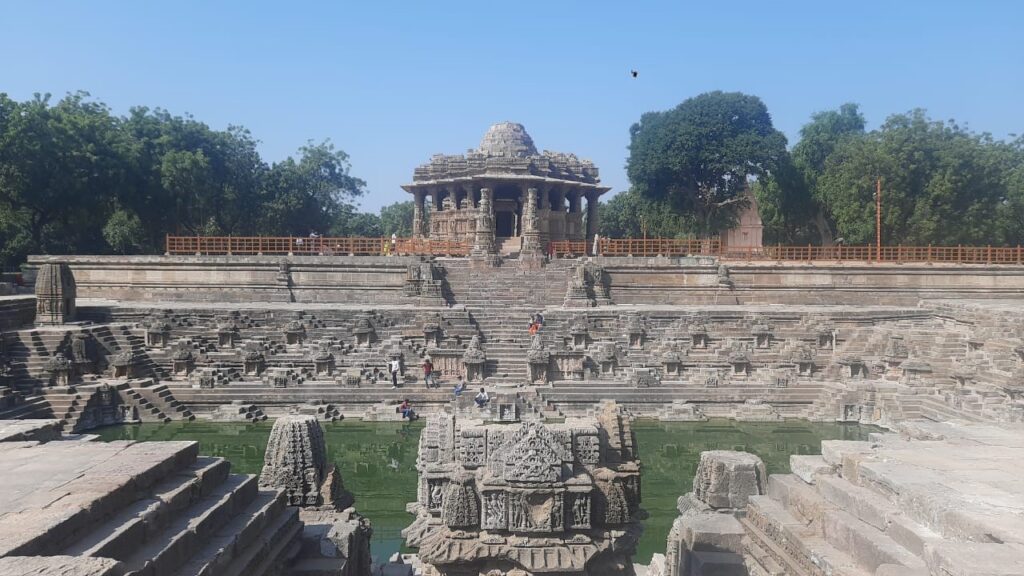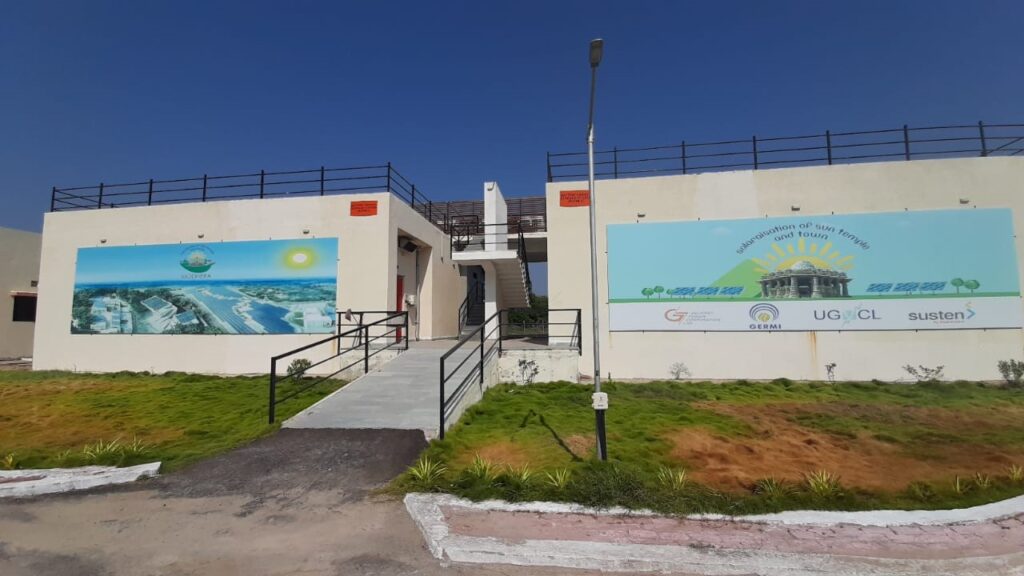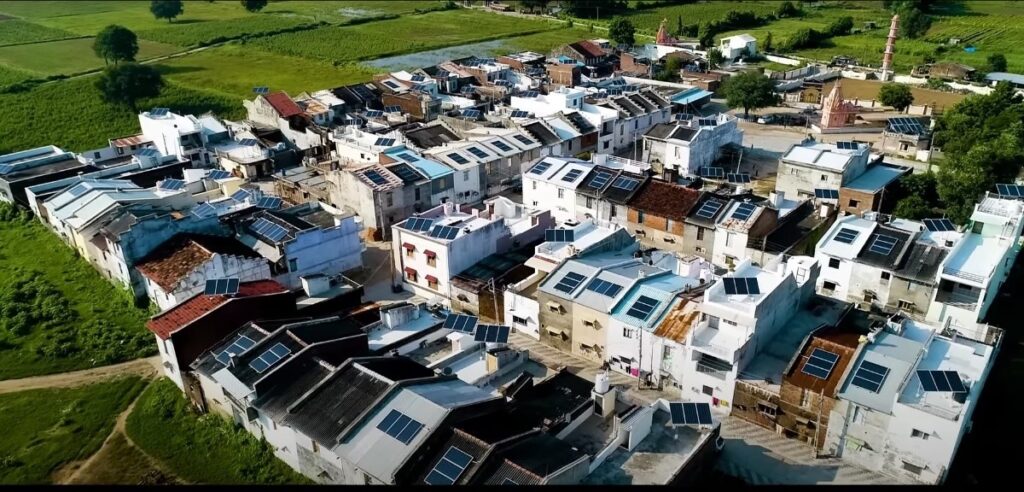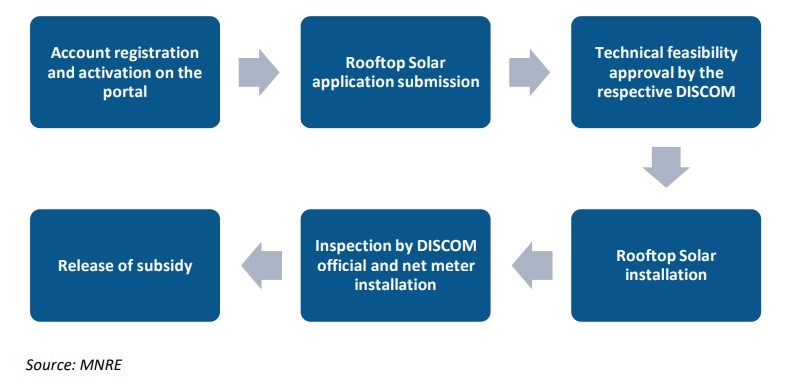Valhat Thakur, in his early twenties, works for Mahindra Susten (a Solar PVC services company) in Modhera, a small village settlement mentioned in ancient scriptures on the banks of the Pushpavati River in the Indian state of Gujarat. A diploma holder in electrical engineering, he moved to the village, which has 8,000 inhabitants, not to work in a sector traditionally associated with rural India, but to become part of the solar power revolution. Modhera became the first 24-hour solar powered village in India in November 2022. It generates not only enough solar energy to cater to the residents’ needs, but also feeds surplus power into the state power grid. Valhat works at the Modhera power plant looking after daily operational issues. He also makes household visits in response to complaints or problems with metering. It might seem like a difficult job, responding to over 1000 homes with rooftop solar panels but streamlined operations mean that Valhat and a few others are able to take care of daily operational issues, with Mahindra Susten sending technical experts for more complicated tasks.

Harnessing solar power is the cornerstone of India’s energy transition strategy and India has made major strides in reducing its cost. Between 2013 and 2020, the average cost of a residential rooftop solar system in India declined 73% to reach US$658 per kilowatt (kW). The Central government has taken initiatives to give a push to rooftop solar through schemes such as Phase II of the Grid Connected Rooftop Solar Program (extended till March, 2026 recently) and PM-KUSUM. Despite this, Rooftop Solar installations have not kept pace with India’s potential, especially in the residential sector. JMK Research estimates that as on 31 March 2022, India’s overall rooftop solar market reached a cumulative installed capacity of 11,770 MW and only 17% of this came from the residential segment (2,010MW). This falls well below the target of 40 GW initially envisaged by 2022 under the Rooftop Solar Program. India, with 300 million homes, needs to look at the factors that have made Gujarat a success in this field and obstacles that are preventing nationwide scalability.

WHAT CAUSED THE ROOFTOP SOLAR BOOM IN GUJARAT & MODHERA?
In Modhera, a crucial element of the project is a 6 MW ground mounted Solar power plant. This was supplemented with rooftop systems on approximately 1300 households. The Gujarat Power Corporation, under its Surya Gram Project, bore the cost of installation of solar rooftop systems free of cost for the entire village. A 15 MWh battery energy storage system (BESS) is installed at Sujanpura village, to cater to energy needs during the night. Solar panels have also been installed at the bus stand, police station, primary health centre, panchayat office and other government buildings. As a result, about 30,000 units of solar power are generated on an average day with 5,500 units being consumed and 6,000 units stored in the BESS. The excess power is fed into the state grid on a daily basis. This has brought down electricity costs for residents from typical monthly electricity bills of around INR 3,000, to around INR 1,000. The project has also improved the quality of life in the village, with more people using electrical gadgets.

The state of Gujarat as a whole has been making progress in solar power, particularly rooftop solar, that have put it at the forefront of the renewable energy revolution that India seeks to achieve. According to a report by the Institute for Energy Economics and Financial Analysis (IEEFA) and partner organization JMK Research, Gujarat accounted for 61% of Cumulative Installed Capacity Trends in Residential Rooftop Solar in India in FY 2022, which is likely to rise to 65% in FY 2023.

The key driver for rooftop solar adoption, from the perspective of the consumer, has been potential reduction in electricity bills. While the net surplus approach of Modhera, where the project also generates enough electricity to feed back into the state grid, may not be possible in all locations, the obvious advantage of cost savings provides a market incentive for adoption of solar. The State Government held awareness to spread information about these benefits and its digital platform communicates the procedure, regulatory approvals and details of subsidies in simple language to the consumer.
The Gujarat government’s SURYA scheme also played a key role, demonstrating the success of digitalisation. A unified single-window rooftop solar portal was created in 2019 to facilitate the hassle-free implementation of the scheme. It offers autogenerated e-mail and SMS delivery systems and different types of auto-generated reports on solar system design, plant performance etc. The portal also integrates with the E-urja, SAP and the chief electrical inspectorate (CEI) portals. This streamlined procedure was one of the factors that led to installation of 1.1 GW capacity over 18 months in Gujarat.

HOW TO MAKE ROOFTOP SOLAR A NATIONAL SUCCESS?
The entire cost (approximately 80 crores) in Modhera was borne by the state. It is unlikely that this can be replicated across the 6 lakh villages of the country. At the same time, Private players are also unwilling to undertake extensive capital expenditure upfront. New financing mechanisms that distribute risk evenly need to be considered wherein the capital expenditure can be addressed through a combination of debt, government assistance and local contributions. Other incentives can range from bringing down costs, such as land for ground mounted component of the plant that can be clubbed with rooftop installations) to higher feed-In-tariff rates offered by various states. Low tariffs are a major reason why the rationale of solar projects recovering their costs through sale of surplus electricity, does not apply for rooftop solar projects.
Lack of familiarity with procedures and technical terms involved in solar installation may also be a factor, particularly for Gram Panchayat led initiatives envisaged under PM-KUSUM. The procedure for applications, approvals and installation has to be streamlined. The launch of the National Digital Portal (https://solarrooftop.gov.in/) to simplify the application process for rooftop solar installations in July this year is a step in the right direction. But the broader challenge is that rooftop solar has to be demand driven, and lack of awareness about the economic benefits of such projects to the individual consumer or the procedure for applications prevents private industry from expanding to new states and regions due to lack of demand.

On the supply side, two issues have to be addressed to ensure capacity – timely disbursement of central and state government subsidies and availability of reliable supply side players across the value chain, including installation, operation and maintenance, high quality solar equipment etc. The central financial assistance and other grants under various government schemes have to be provided in a timely manner. The National Digital Portal has adopted the Direct Benefit Transfer (DBT) mechanism for transfer of subsidies and this needs to be expanded to off grid installations as well. Developing a vibrant supply side ecosystem to catch up with growing demand, is a more holistic challenge. A market of local vendors is essential for rooftop solar to take off, especially in rural areas, so that new projects are not delayed or of low quality due to supply side constraints

As evening sets in, the temple is lit up with lights powered by the solar project in poetic homage to the bounty of the solar power. The rooftops are patched with gleaming solar panels, which have become a part of Modhera’s identity now. In an initiative that has been driven by state authorities as well as the local community, the Modhera solar project shows a path to energy self-sufficiency through use of renewable energy resources. Rising fuel and commodity prices and geopolitical conflicts over the past year have exposed the vulnerabilities of fossil fuel led development in the developing world. However, new financing mechanisms to address capital costs, increase in awareness regarding benefits, streamlined application procedure and regulatory processes, reforms to develop a market rationale for private industry to come into rooftop solar, along with addressing supply side issues related to government assistance and input availability, need to be addressed to emulate the example of Modhera and Gujarat across India.
Shantanu Pratap Singh is a civil servant and wildlife enthusiast